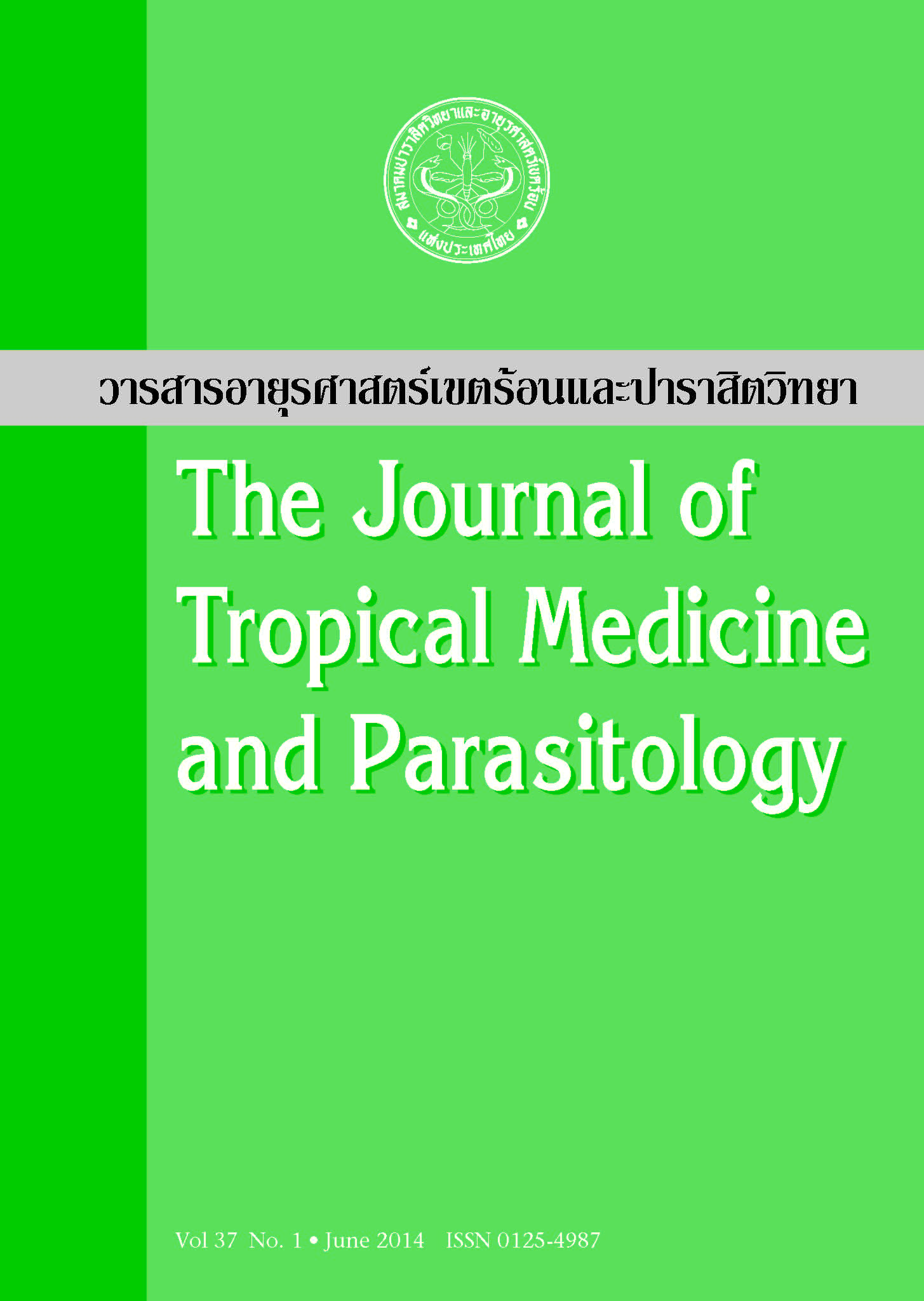Cryptosporidium Viability Testing: A Review
Main Article Content
บทคัดย่อ
Cryptosporidium has emerged as a significant cause of water-borne parasitic outbreaks, making it an important priority for water-resource management. It is challenging to detect the parasite and to determine whether oocysts are viable since non-viable oocysts in environmental samples do not cause infections and are therefore of little concern for public health, making accurate viability testing a crucial step in monitoring and controlling this parasite. The ideal test for defining viability is testing the ability of parasite in causing disease in humans, which is not feasible. This has led to alternative procedures to determine whether oocysts are capable of causing infection in susceptible hosts. We reviewed existing articles concerning methods used in determining Cryptosporidium viability, the advantages and disadvantages of each technique, and proposed a method of choice by rating and weighting criteria based on five indicators: (i) reliability; (ii) applicability; (iii) technical expertise required; (iv) time consumed; and (v) cost. Based on these criteria, fluorescence in situ hybridization (FISH) and vital dye staining are classified as excellent methods, while RT-PCR, animal inoculation, in vitro excystation, and cell culture are considered good. Good and excellent methods were then evaluated in multiple sample types. FISH was the most appropriate technique for clinical specimens due to its high tolerance to inhibitors, which affect the results obtained by other methods. Viability studies in environmental samples, such as drinking water, wastewater, ground water, soil, and sludge, are difficult, and need special consideration because of low levels of oocyst contamination. FISH, vital dye staining, and in vitro excystation are possible methods for use with these kinds of samples, while animal infectivity is the most appropriate technique for chemical or physical inactivated samples. The information presented here could be a guideline for selecting the appropriate technique, or for developing new methods for viability testing that may benefit public health, and overcome common obstacles.
Article Details
ประเภทบทความ
Review

